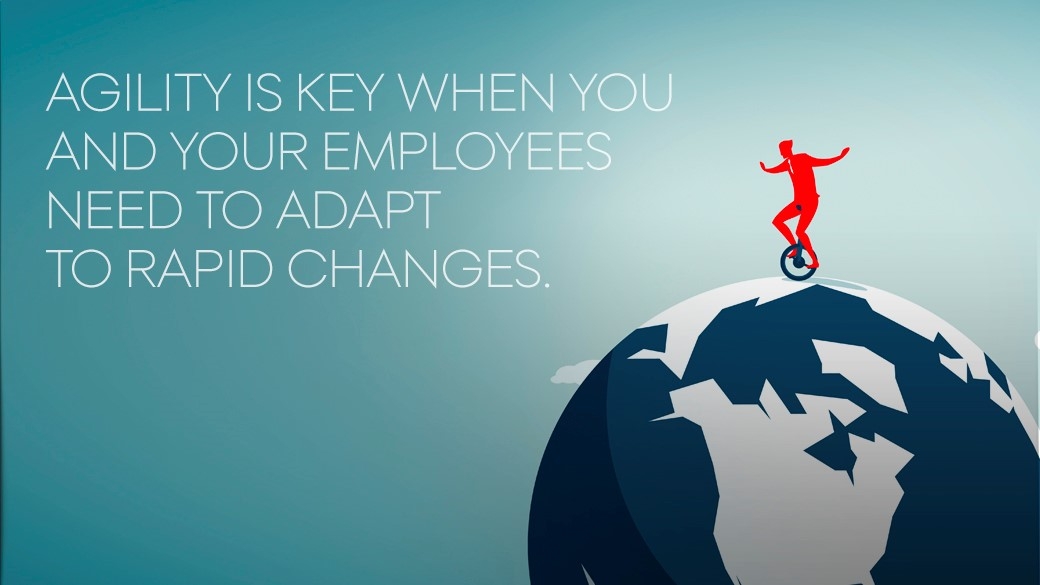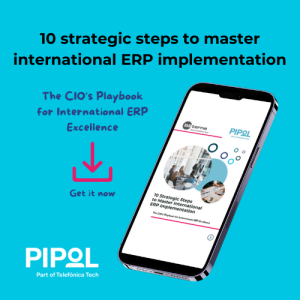Agility is fundamental in today’s chase to adapt to rapid changes. Help your employees navigate the turnaround.

A completely different kettle of fish
With more and more well-known industry names such as Apple and Philips adopting agile techniques, many organizations are now looking to embrace the same approach. The often-underestimated flipside, however, is that agile enterprises typically have fewer conventional midlevel managers than traditional enterprises. This is because the usual functions, such as project planning, task assignment, reporting, documentation and employee evaluation get absorbed by other roles. It’s a new reality with more opportunities for individual contributors and leaders but few, if any, positions for midlevel managers.
From manager to agile champion
So, what can senior executives do to mitigate this and keep valuable former managers committed, motivated and engaged?
The first step you need to take is to ease the concerns your midlevel managers may have about what agile transformation could mean for their roles and careers, and where they will fit in the new agile landscape. You need to reassure them that success should no longer be equated with the number of direct reports they have or the size of their budget but rather on their capabilities and mindset.
This is because, unlike conventional companies where strong individual contributors gain promotions and people management responsibilities, agile enterprises choose a different route, unleashing the power of small, spry teams to define their own priorities, delegate work and keep themselves on track. To put it another way, they are self-managing. What agile enterprises need are leaders not managers. Strong leaders who can exhibit supportiveness, a results-oriented mindset, an openness to alternative perspectives and adept problem-solving skills – attributes normally associated with senior executives.
Viewed from this perspective, you have a unique opportunity to alleviate concerns and reassure your midlevel managers that while the door to midlevel management has indeed closed, the door to more rewarding leadership positions is now wide open.The trick is to make career paths and compensation scales clear, simple, transparent—and fair.
Easing the transition
Working to allay concerns is one thing but what about the actual transition? How can you make transforming to agile as effective and successful as possible for your midlevel managers? Here are some steps you can take to help your midlevel managers steer their way through the changeover and thrive in an agile company.
- Co-create and secure buy-in
Midlevel managers adjust better to change when they are part of that change. In the planning phases, don’t exclude the very people who will be instrumental to its success. Your managers have detailed knowledge of day-to-day processes and functions. This knowledge is invaluable when creating your agile transformation vision and will go a long way towards turning midlevel managers into your allies of the changes to come.
- Define agile roles
It is pivotal for senior executives to be clear about the number and combination of positions you will need to operate efficiently. This is why clarity on what abilities and personal qualities are needed is also essential in order to place the right people in the right roles. Make sure you take time to define what roles you have today and what roles you will need tomorrow in an agile enterprise. Definition and transparency on what positions need to be put in place is a key element to a successful transformation. Your midlevel managers will have vital input to this exercise, so don’t exclude them.
- Develop 360 view of former managers and encourage them to pursue agile roles
The way agile organizations delegate responsibilities among roles gives former midlevel managers an opportunity to take on duties that contrast to those of a conventional manager. It’s a unique opportunity to pursue new and rewarding paths and uncover hitherto undiscovered talents. But remember, besides helping midlevel managers figure out their paths to new agile roles, you must also conduct your own appraisals and make sure that candidates meet your organization’s agile needs.
- Adopt agile approaches to assessment and progression
In traditional top-down hierarchical enterprises, senior managers are used to performance reviews, and high-achieving managers are usually rewarded with a bonus or a pay rise. It’s a trickle-down effect and managers, in turn, enact evaluations and personal development plans for their direct reports. At agile organizations, though, the tasks of overseeing projects and rating an employee’s performance are handled differently. Simply put, it takes a village where all team members provide feedback on and about each other. Therefore, it’s essential that leaders are prepared for this new and contrasting way of appraisal.
- Build leadership abilities through focused training
In the transition to the new agile enterprise, senior executives must pay extra attention to what midlevel managers want to achieve and what steps they need to undertake in order to reach their goals. Former managers with outstanding expertise in a given area and a willingness to learn could, for example, be encouraged to advance along a technical track by deepening their skills through coaching. Alternatively, those with evident leadership qualities could be trained for new agile leadership roles.
The key is communication, transparency and inclusion
No matter what, done well, most agile transformations result in a dip in the number of staffers performing midlevel management roles, contrasted with an increase in the proportion of the workforce performing value-added roles. Imperative, is figuring out how to redeploy high-performing, midlevel managers to new roles without people management and budget responsibilities, while still ensuring that the rewards and job satisfaction involved will result in their welcoming the news. It’s a fine line that senior executives need to walk. The key is communication, transparency and inclusion. Once mastered, companies can reap the rewards by retaining the skill, experience, and institutional knowledge of their midlevel managers.
Do you need help with your agile transformation? At Pipol, we have deep experience in helping international and global companies to adapt to rapid change and make the transition to agile.
Contact us today to hear more.





